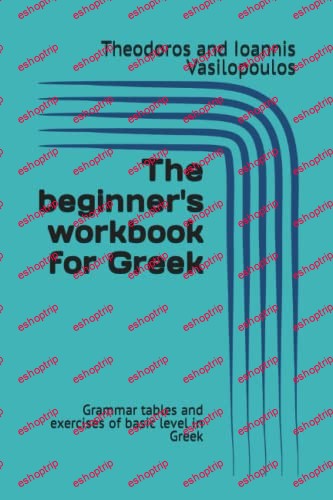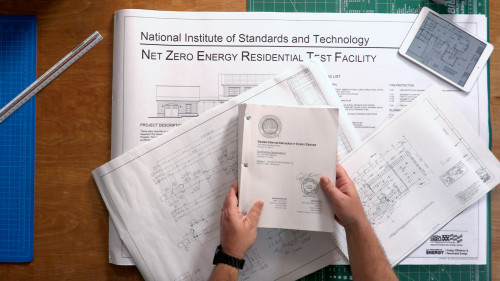Published 9/2023
Created by Engineer Renato C.
MP4 | Video: h264, 1280×720 | Audio: AAC, 44.1 KHz, 2 Ch
Genre: eLearning | Language: English | Duration: 142 Lectures ( 30h 50m ) | Size: 12.8 GB
From Novice to Pro: FEA Proficiency Unleashed
What you’ll learn
Uncover the theory underpinning finite element method and gain hands-on experience with commercial software, demystifying its inner workings.
Learn the foundations of finite element analysis and unlock the secrets behind commercial software, making it a transparent tool in your engineering arsenal.
Bridge the gap between theory and practice as you navigate the finite element method, enhancing your ability to decipher the mechanics of commercial software.
Equip yourself with a deep understanding of finite element theory and practical software proficiency, ensuring you’re not limited by ‘black box’ solutions.
Requirements
Basic Engineering Knowledge: Students should have a fundamental understanding of engineering principles, including mathematics, physics, and mechanics.
A Willingness to Learn: An eagerness to dive deep into the theoretical concepts and commit to hands-on practice is crucial for success in this course.
Description
Unlock the power of Finite Element Analysis (FEA) in structural engineering with our comprehensive course, designed to take you from theory to practical proficiency. Over 11 engaging modules, you’ll delve deep into the intricacies of FEA and reinforce your knowledge through hands-on workshops. Whether you’re a novice looking to start your journey or a seasoned professional seeking to refine your skills, this course has something valuable to offer at every level.Module 1: Introduction to Finite Element Analysis- Fundamental Concepts- Why is FEM so important?- Workshop 01: Building Your First Finite Element Model: Bike CrankModule 2: Linear Elastic Spring Element- Spring theory- System Assembly in Global Coordinates- Exercises- Workshop 02: Linear Spring ElementModule 3: Elastic Bar Element- Bar theory- Exercise- Strain Energy- Castigliano’s First Theorem- Minimum Potential Energy- Workshop 03: Linear Bar ElementModule 4: Truss Structures- Nodal Equilibrium Equations- Element Transformation- Direct Assembly of Global Stiffness Matrix- Boundary Conditions, Constraint Forces- Element Strain and Stress- Comprehensive Example- Three dimensional Trusses- Workshop 04: 2D Truss StructureModule 5: Beam Element- Elementary Beam Theory- Beam Element- Beam Element Stiffness Matrix- Element Load Vector- Work Equivalence for Distributed Loads- Flexure Element with Axial Loading- A General Three-Dimensional Beam Element- Workshop 05: Beam ElementModule 6: Equations of Elasticity- Strain-Displacement Relations- Stress-Strain Relations- Equilibrium Equations- SummaryModule 7: Matrix Mathematics and Solution Techniques for Linear Algebraic Equations- Matrix Mathematics- Solution Techniques for Linear Algebraic EquationsModule 8: Plane Stress- Equations of Elasticity for Plane Stress- Finite Element Formulation: Constant Strain Triangle- Stiffness Matrix Evaluation- Distributed Loads- Body Forces- Workshop 06: Rectangular Plate with Central Circular HoleModule 9: Plane Strain- Equations of Elasticity for Plane Strain- Finite Element Formulation: Four-node Rectangle- Numerical Integration: Gaussian Quadrature- Workshop 07: C-ClampModule 10: Isoparametric Formulation- Four-node quadrilateral element- Exercise- Singularity of the Jacobian MatrixModule 11: General Three-Dimensional Stress Elements- Introduction- Equations of Elasticity- Finite Element Formulation- Example: 4-node Tetrahedral- Stress and Strain Computation- Workshop 08: Connecting LugThroughout this course, you’ll receive expert guidance, learn best practices, and gain practical experience to tackle real-world structural analysis challenges confidently. Don’t miss this opportunity to become a proficient Finite Element Analysis practitioner and enhance your career in structural engineering. Join us today and embark on a journey toward mastering FEA.
Who this course is for
Engineering and Science Students: This course is primarily aimed at undergraduate and graduate students studying engineering disciplines, such as mechanical, civil, aerospace, or materials engineering. It’s also relevant to students in related scientific fields.
Engineering Professionals: Engineers and professionals who want to deepen their understanding of the finite element method theory and gain insights into the inner workings of commercial software tools can benefit from this course.
Researchers: Researchers in engineering and scientific fields who need to use finite element analysis as part of their research projects can enhance their skills and knowledge through this course.
Career Advancers: Individuals looking to advance their careers in industries where finite element analysis is widely used, such as automotive, aerospace, structural design, and manufacturing.
Curious Learners: Anyone with a genuine interest in understanding the theoretical foundations behind engineering simulations and software tools, even if they are not pursuing formal education or a career in engineering.
Homepage
https://anonymz.com/?https://www.udemy.com/course/the-finite-element-method/











Reviews
There are no reviews yet.